A simple overdrive pedal designed for a bass guitar but also suitable for electric guitars. The circuit is designed around the TL072, with either 1N4108 silicon diodes or 3mm red LEDs as clipping diodes. It features an additional switchable bass distortion boost (which in the current version makes only a very subtle difference) and switchable clipping diodes, as well as a clean boost option (no clipping diodes selected). The input stage is designed for high-impedance signals and features a J201 JFET buffer. It also adds a blend control for mixing dry/distorted signals, as well as a simple tone control knob to remove some of the high-end hiss. In addition to that, I’ve added a 100pF capacitor in the feedback loop of the distortion stage to tame some of the high-end. This could be changed to a lower value to retain more of the high frequencies if desired.
One of the most complicated and unnecessary parts is the true-bypass-switch circuit. This could have been done using a simple stomp switch. However, I wanted to build it with only a toggle switch and do the switching with a relay and a bistable multivibrator circuit (based on the one used in a variety of boss pedals).
The circuit works great, and the sound is definitely usable. In hindsight, I would have left out the switching circuit and used a normal switch. However, it was a fun build and helped me gain more knowledge about the art of pedal design.
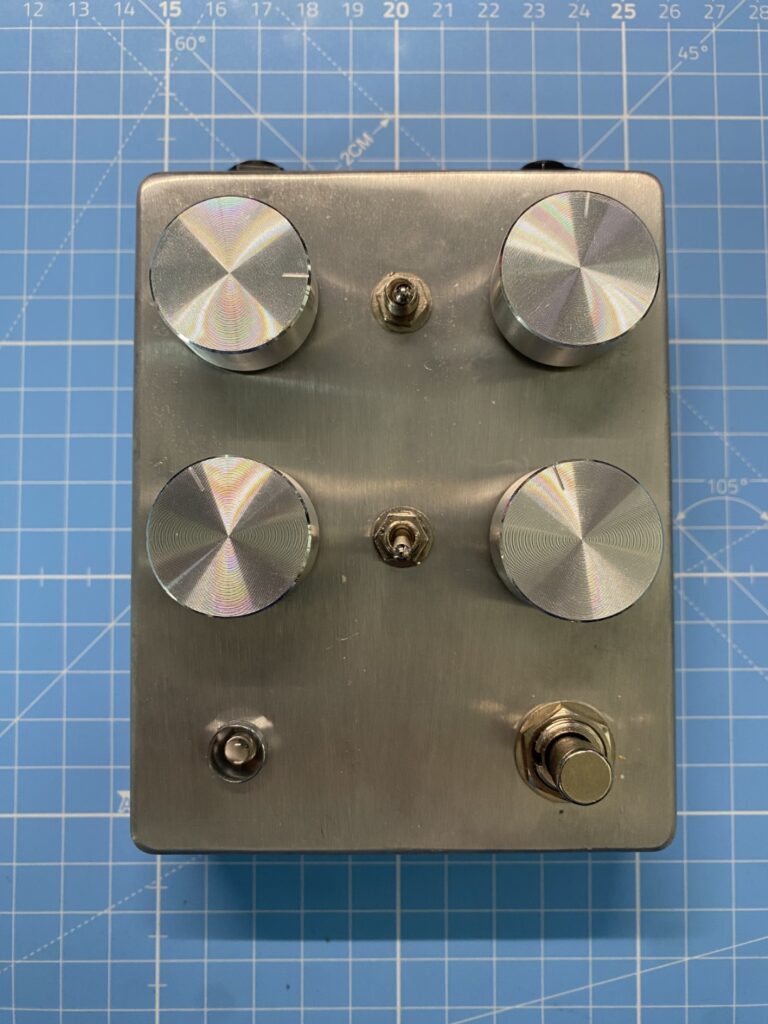
The pedal is built in a BB-type enclosure, and the circuit is built on perfboard. The wiring took almost 9 hours. I learned from past designs and added JST connectors for easy disassembly and repair. Some decals for the front plate will be designed and added in the future. For now, it is working and ready to be used!
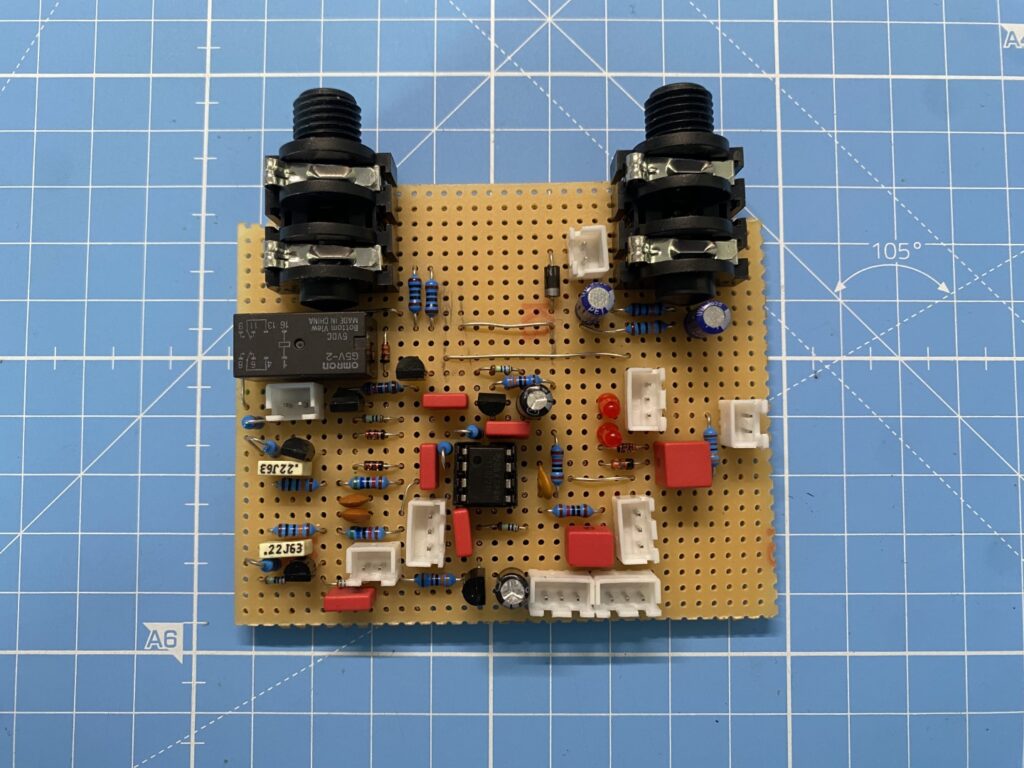
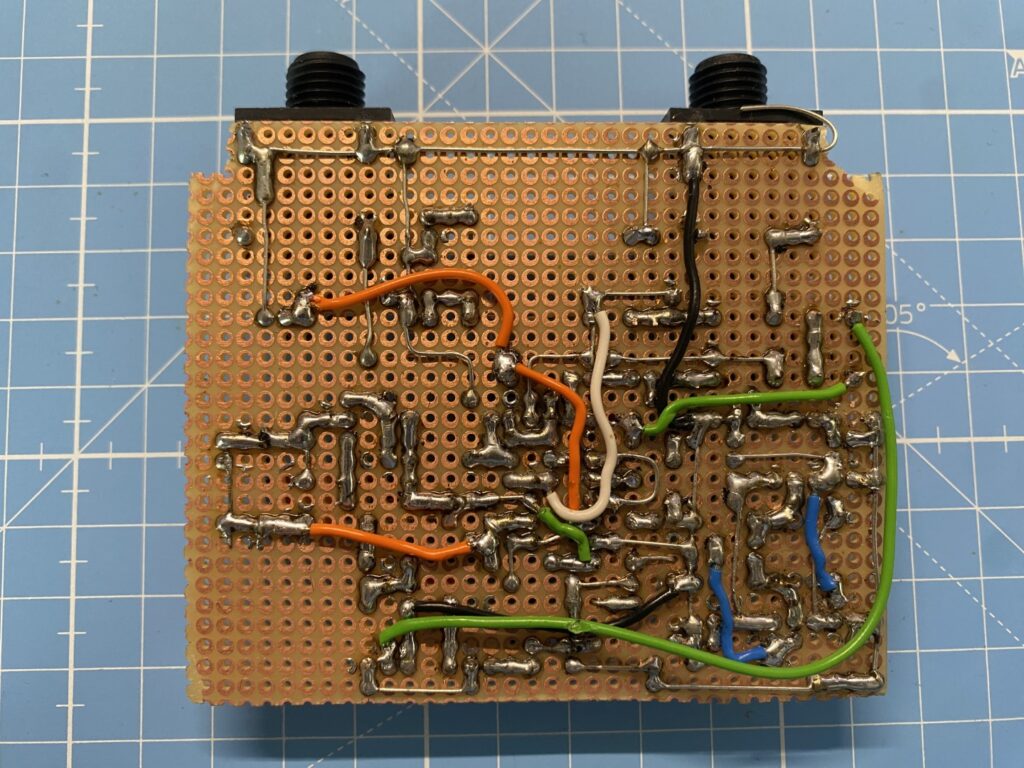
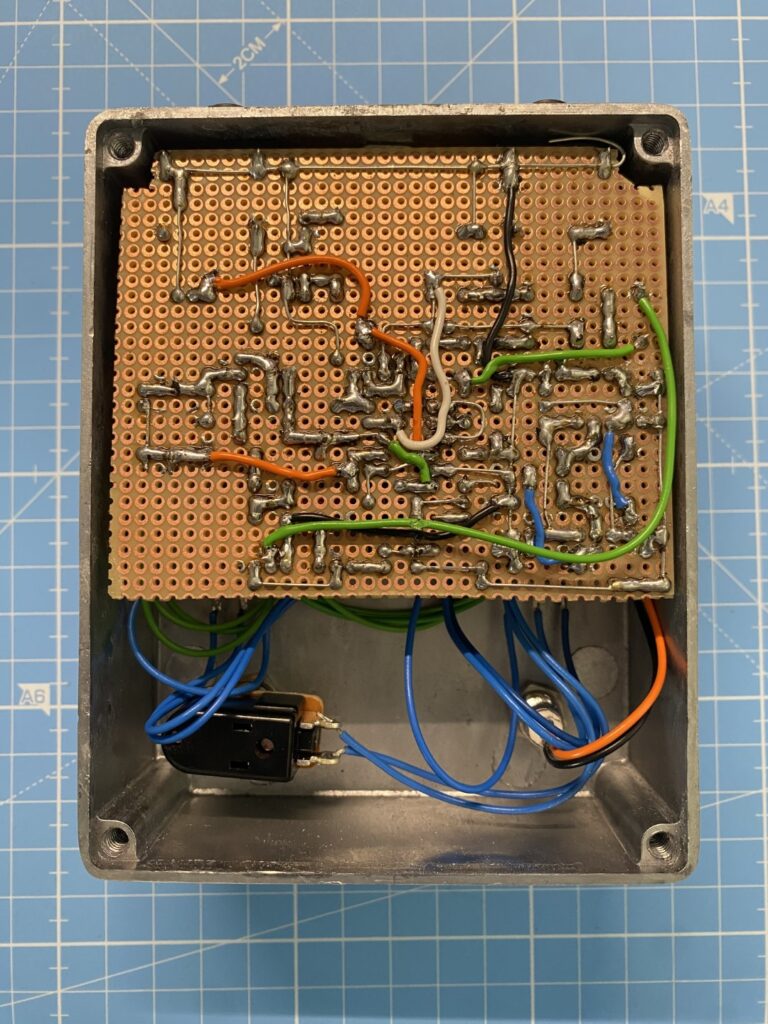
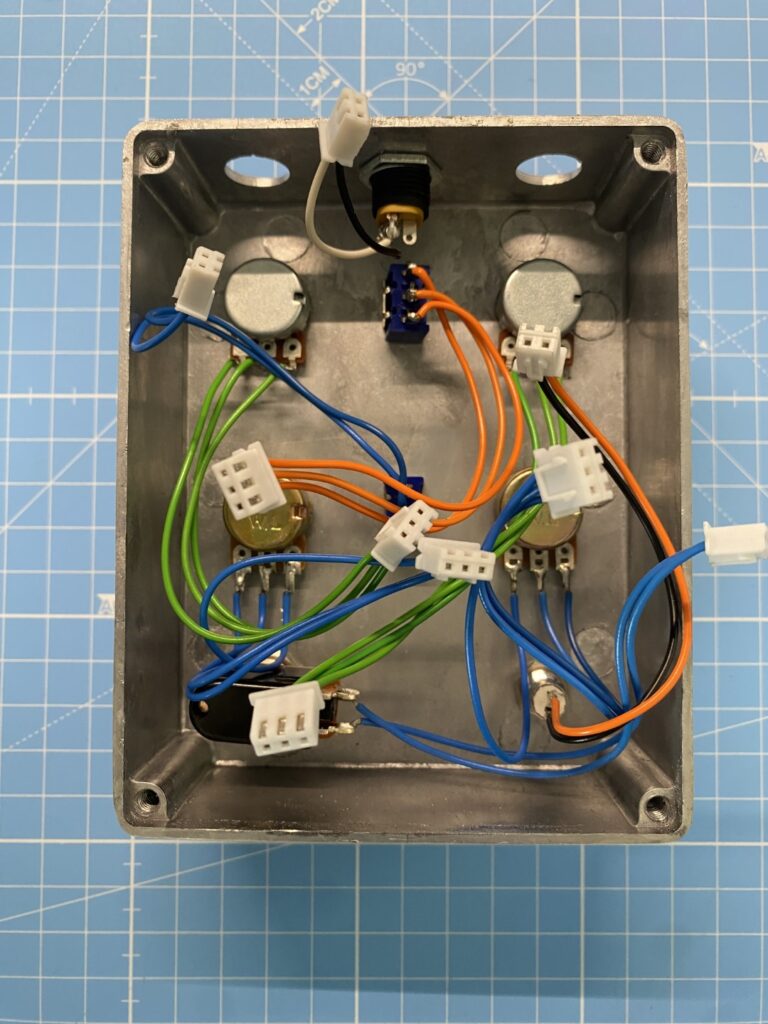
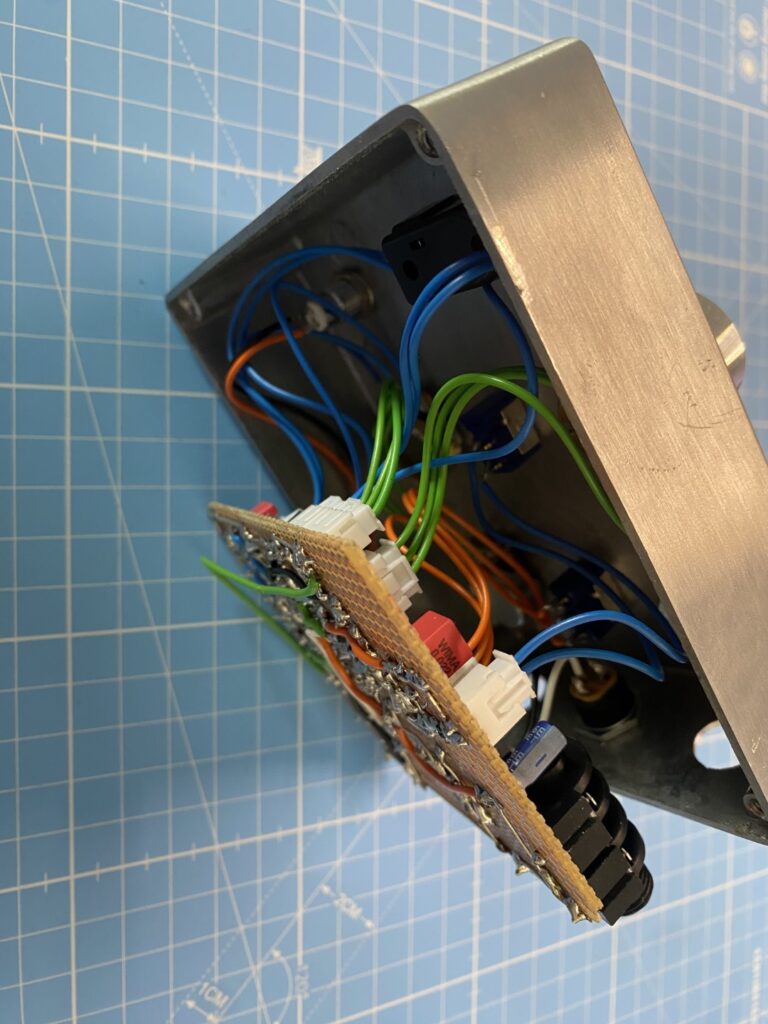
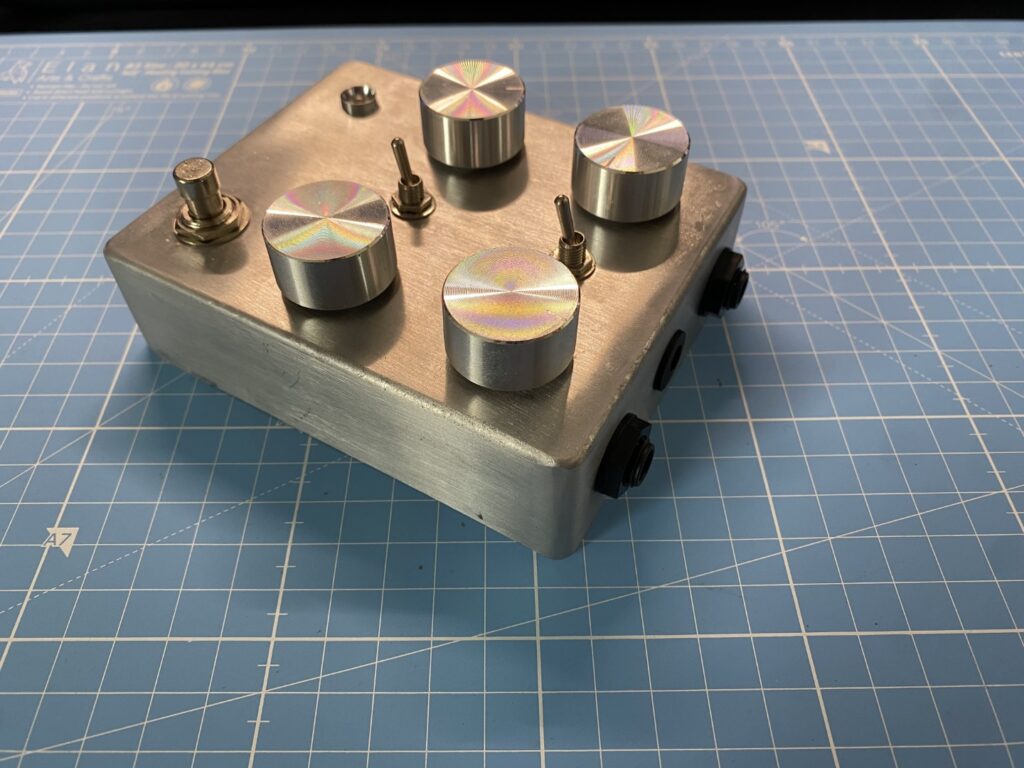
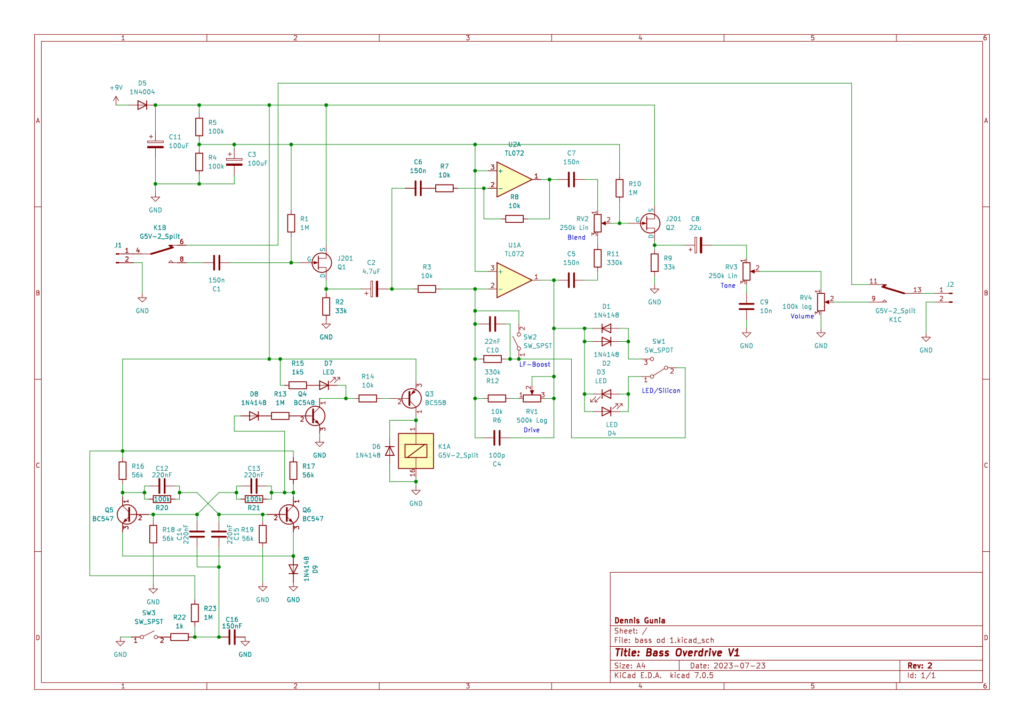
The schematics provided herein are intended for informational purposes only. The information contained in these schematics is provided “as is,” with no guarantee of completeness, accuracy, or suitability for any particular purpose. The user assumes full responsibility for any use of the schematics and acknowledges that any reliance on the information provided is at their own risk.
